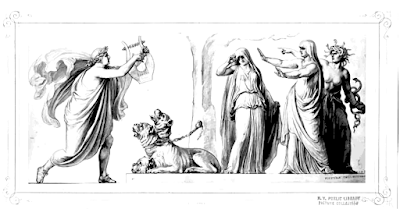Stones of Erasmus — Just plain good writing, teaching, thinking, doing, making, being, dreaming, seeing, feeling, building, creating, reading
10.8.23
Tracking & Analyzing Myth Variations: A Comprehensive Guide to Using Graphic Organizers and Visual Aids in the Classroom
 I am an educator and a writer. I was born in Louisiana and I now live in the Big Apple. My heart beats to the rhythm of "Ain't No Place to Pee on Mardi Gras Day". My style is of the hot sauce variety. I love philosophy sprinkles and a hot cup of café au lait.
I am an educator and a writer. I was born in Louisiana and I now live in the Big Apple. My heart beats to the rhythm of "Ain't No Place to Pee on Mardi Gras Day". My style is of the hot sauce variety. I love philosophy sprinkles and a hot cup of café au lait.
9.8.23
Unlocking Success: A Guide to Building Strong Parent-Teacher Connections with Our First-Day Surveys
 |
| Download a Suite of Print and Digital Tools on TpT. |
 I am an educator and a writer. I was born in Louisiana and I now live in the Big Apple. My heart beats to the rhythm of "Ain't No Place to Pee on Mardi Gras Day". My style is of the hot sauce variety. I love philosophy sprinkles and a hot cup of café au lait.
I am an educator and a writer. I was born in Louisiana and I now live in the Big Apple. My heart beats to the rhythm of "Ain't No Place to Pee on Mardi Gras Day". My style is of the hot sauce variety. I love philosophy sprinkles and a hot cup of café au lait.
5.8.23
Unleashing Creativity: Crafting Engaging Digital Content for Humanities Education
As a passionate educator, I've dedicated countless hours to crafting engaging digital content for middle and high school humanities teachers. The intricate process involves dozens of steps and takes up to six hours per listing. But the result? A treasure trove of resources that bring depth and engagement to the classroom.
My journey begins with sourcing public domain content from libraries such as the New York Public Library digital collections and public domain content I find on Google Books and from the Library of Congress. These timeless resources serve as the foundation upon which I build. I then add my original lesson plans, question banks, exit tickets, writing prompts, and activities. The aim? To create content that not only educates but also captivates.
Sometimes, the raw materials need a little sprucing up. An illustration from a nineteenth-century book might be old and dingy, or text from a public domain source might be outdated. That's where Adobe Photoshop and Illustrator come into play, helping me breathe new life into these resources.
 |
| Revitalizing history: the top image showcases my restoration of a 19th-century lithograph, significantly enhancing its clarity compared to the original below. Retrieved from the NYPL digital collection. |
 |
| I partner with TpT to provide educational content for Humanities and English language arts teachers. |
 I am an educator and a writer. I was born in Louisiana and I now live in the Big Apple. My heart beats to the rhythm of "Ain't No Place to Pee on Mardi Gras Day". My style is of the hot sauce variety. I love philosophy sprinkles and a hot cup of café au lait.
I am an educator and a writer. I was born in Louisiana and I now live in the Big Apple. My heart beats to the rhythm of "Ain't No Place to Pee on Mardi Gras Day". My style is of the hot sauce variety. I love philosophy sprinkles and a hot cup of café au lait.
4.8.23
A Multiverse of Possibilities: A Review of Matt Haig's 'The Midnight Library'
 |
| Haig, Matt. The Midnight Library: A Novel. United States, HarperCollins, 2020. |
 I am an educator and a writer. I was born in Louisiana and I now live in the Big Apple. My heart beats to the rhythm of "Ain't No Place to Pee on Mardi Gras Day". My style is of the hot sauce variety. I love philosophy sprinkles and a hot cup of café au lait.
I am an educator and a writer. I was born in Louisiana and I now live in the Big Apple. My heart beats to the rhythm of "Ain't No Place to Pee on Mardi Gras Day". My style is of the hot sauce variety. I love philosophy sprinkles and a hot cup of café au lait.
3.8.23
Engaging ELA Lessons: Exploring the Greek Myth of Orpheus and Eurydice with Middle and High School Students
 |
| Stones of Erasmus offers an Educational Download designed to teach the myth of Orpheus and Eurydice |
In the realm of English Language Arts (ELA), the ancient, tragic tale of the Greek myth of Orpheus and Eurydice offers a rich tapestry of themes and lessons for middle and high school students. Stones of Erasmus has created a comprehensive educational resource that provides an engaging, interactive, and distance-learning optimized approach to this timeless tale.
 |
| Orpheus enters the underworld. Image Credit: NYPL Digital Collections |
The story of Orpheus, the divine musician who loses his wife Eurydice twice, is a poignant exploration of love, loss, and the creative power of music and art. Our resource brings this myth to life in the classroom, whether virtual or physical, through a variety of activities and discussion prompts.
Over a three-day lesson plan, students will delve into the myth, analyze its characters and themes, and engage in critical thinking. The resource includes:
1. Art + Literature Connections: Students compare the myth with artwork by renowned artists like Auguste Rodin, fostering a deeper understanding of the story.
2. Reading Cards: This lesson is most effective when supplemented with diverse texts from Edith Hamilton's Mythology, Bulfinch's Mythology, and Ovid's Metamorphoses. However, the resource also includes an introductory dictionary entry on classic Greek and Roman mythology for a comprehensive start.
3. Reading Comprehension and Critical Thinking Questions: These questions encourage students to delve deeper into the text, promoting comprehension and critical thinking.
4. Frayer Model Vocabulary Cards: This visual approach to vocabulary helps students understand terms, geography, and challenging words in the context of the story.
5. Exit Tickets: These provide immediate feedback on students' understanding of the lesson, helping teachers adjust future instruction as needed.
6. Essay Writing Activity: This activity caps off the lesson, allowing students to express their understanding of the myth in a creative way.
Our resource aligns well with the Common Core Standards, particularly the reading literature standard that encourages the analysis of a subject or key scene in two different artistic mediums.
Whether used as a stand-alone lesson or paired with a larger unit on Myth, Percy Jackson and the Lightning Thief, Robert Graves’s Greek Myths, or Edith Hamilton’s Mythology, or Parallel Myths by J.F. Bierlein, this resource offers a comprehensive and engaging exploration of the tragic love story of Orpheus and Eurydice.
For more resources like this, visit the Stones of Erasmus TpT store, and join us on our journey to make ELA education more engaging and interactive.
 I am an educator and a writer. I was born in Louisiana and I now live in the Big Apple. My heart beats to the rhythm of "Ain't No Place to Pee on Mardi Gras Day". My style is of the hot sauce variety. I love philosophy sprinkles and a hot cup of café au lait.
I am an educator and a writer. I was born in Louisiana and I now live in the Big Apple. My heart beats to the rhythm of "Ain't No Place to Pee on Mardi Gras Day". My style is of the hot sauce variety. I love philosophy sprinkles and a hot cup of café au lait.
1.8.23
Discover Wink: The Charming Penguin Statue of Jackson Heights, Queens
@cafedumonde Discovering the adorable quirks in the heart of Jackson Heights, Queens. Nestled within a grassy patch at the bustling intersection of 37th Road and 74th Street, a charming penguin statue guards the Elmjack Mall. Far from being just a delightful sight, this small figure plays a crucial role in traffic safety, poised to take on any potential impact. Located near the busy Roosevelt Avenue IRT elevated station, this hidden gem adds a touch of whimsy to the urban scene. • • • #JacksonHeights #Queens #PenguinStatue #ElmjackMall #UrbanExploration #QuirkyCitySights ♬ original sound - A.G. Millington
 I am an educator and a writer. I was born in Louisiana and I now live in the Big Apple. My heart beats to the rhythm of "Ain't No Place to Pee on Mardi Gras Day". My style is of the hot sauce variety. I love philosophy sprinkles and a hot cup of café au lait.
I am an educator and a writer. I was born in Louisiana and I now live in the Big Apple. My heart beats to the rhythm of "Ain't No Place to Pee on Mardi Gras Day". My style is of the hot sauce variety. I love philosophy sprinkles and a hot cup of café au lait.
31.7.23
Paul Reubens as Pee-Wee Herman: A Journey of Unapologetic Joy and Playfulness
 I am an educator and a writer. I was born in Louisiana and I now live in the Big Apple. My heart beats to the rhythm of "Ain't No Place to Pee on Mardi Gras Day". My style is of the hot sauce variety. I love philosophy sprinkles and a hot cup of café au lait.
I am an educator and a writer. I was born in Louisiana and I now live in the Big Apple. My heart beats to the rhythm of "Ain't No Place to Pee on Mardi Gras Day". My style is of the hot sauce variety. I love philosophy sprinkles and a hot cup of café au lait.




